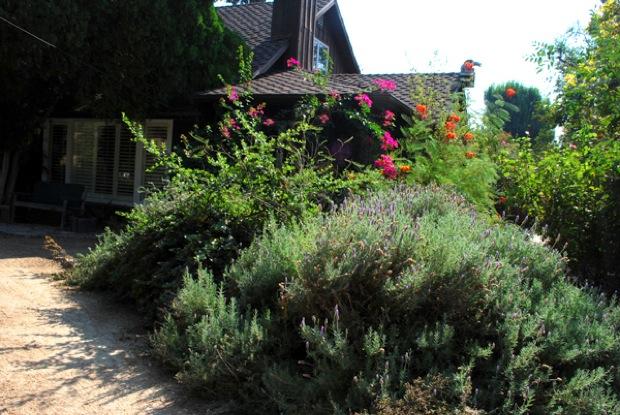
Green lawns, heated pools, waterfalls, a bed of flowers and custom garden stones are some examples of what one will find in the garden of a California suburban home.
For the first time, the CSUN-al Gardening Series is conducting a session called “Audubon Habitat” to help homeowners put together a garden or backyard that is healthy to wildlife and the environment.
Dr. Alan Pollack, the San Fernando Valley Audubon Society Committee chair for the Audubon At Home program, is presenting a slideshow September 19 on how homeowners can attain an Audubon habitat. The Audubon Society’s mission, according to Dr. Pollack, is to preserve wildlife, especially birds, habitats and natural resources.
What is an Audubon habitat?
According to Brenda Kanno, manager at CSUN’s Botanic Garden, an Audubon habitat refers to a type of garden that is certified to be wildlife-friendly. Butterflies, birds and insects can benefit from the nurturing habitat, while people can enjoy the beauty and scents of the yard in a way that is different from the typical garden.
A typical garden has a grass lawn. An Audubon habitat is natural, in a sense that people will not need too many fertilizers and people will not water the plants as often. The resources to maintain an Audubon habitat are much less than what it takes to maintain a standard lawn or garden.
“That’s a greener approach,” Kanno said.
“Life on this planet depends on its bio-diversity and wildlife needs habitat to live in just like humans do,” Pollack said when asked why it is important for homeowners to have a backyard that is wildlife-friendly.
“With all our developments, homes, agriculture and shopping centers, wildlife habitat is disappearing,” Pollack said. “If the habitat disappears, so does the wildlife. If that happens, we’re in serious trouble.”
Pollack tries to influence people by inviting them to tour his garden, which is certified by the National Wildlife Federation. He hopes that people will change their way of thinking after listening to his discussions. He especially likes to reach out to young people since the older folks are already set in their ways.
During his presentation, Pollack will discuss what wildlife needs, which includes water, food, shelter and places to raise their young. He will explain how we can accomodate those needs. He is also going to talk about sustainable gardening practices like conserving water, protecting the soil and encouraging native plant growth.
Pollack plans on giving homeowners tips on how to choose the right plants for wildlife.
“Most people have meticulous manicured yards and those are wildlife-unfriendly. Mother Nature is not a meticulous housekeeper,” he said.
In order to conserve water, Pollack advises homeowners to go with native landscaping and avoid exotic plants that may use a lot of water. In addition, pesticides and fertilizers work their way into our water system, which are not only dangerous to our health but also hurt the ocean. Pollack explained that there are 400 areas in the ocean that are now considered dead zones, which means nothing grows on it and in it.
“Life on this earth depends on our ocean,” he said.
In his garden, one will find a mixture of California native and non-native plants, plants that use less water, drought tolerant and Mediterranean-climate types of plants. He also has a bed of herbs which includes rosemary, sage and lavender.
“Dead and dying trees are important to a garden or a forest’s ecology,” he said, which explains the dying elm tree in his yard. It attracts bugs for bug-eating birds and it forms cavities for owls and woodpeckers. Critters go inside for shelter as well as for nesting.
He also has a dead Christmas tree in his yard that serves as a supplemental feeding area for the birds.
Pollack will offer more tips during his presentation. The 9 a.m. and 11:30 a.m. sessions are already full, but those interested may sign up to be on a waiting list.
For more information, go to the CSUN Botanic Garden Web site, http://www.csun.edu/botanicgarden, or e-mail botanicgarden@csun.edu. Pollack will also be at Los Angeles Pierce College Oct. 17 for a workshop. He will have a presentation and a tour of his garden Nov. 22 as part of the San Fernando Valley Audubon College Student Conservation Committee. For more information, visit their Web site at www.sfvaudubon.org.




